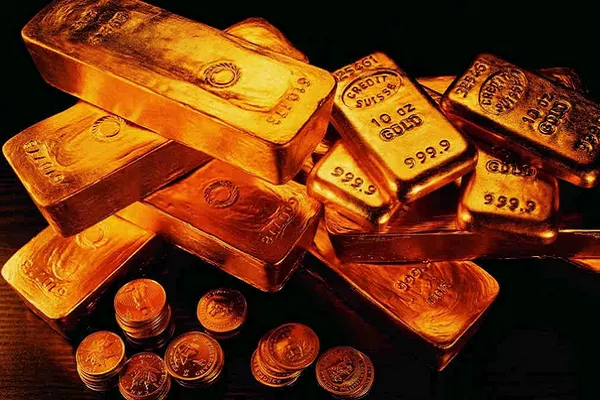Gold has captivated human civilization for millennia, and its allure extends to modern financial markets. Investors and traders often seek to decipher the patterns and trends within the gold market to make informed decisions. One intriguing aspect of gold futures trading is the presence of seasonal patterns—recurring trends that can provide valuable insights for market participants. In this article, we will explore these seasonal patterns in gold futures and how traders can uncover opportunities within them.
I. Understanding Seasonal Patterns
Seasonal patterns in financial markets refer to recurring price trends that tend to follow a specific calendar cycle. These patterns can be influenced by a variety of factors, including weather, holidays, and economic events. Traders and investors analyze these patterns to anticipate price movements and make more informed trading decisions.
Why Seasonal Patterns Exist
Seasonal patterns often emerge due to historical patterns of supply and demand, investor behavior, and institutional factors. In the case of gold, various factors contribute to its seasonal patterns:
Jewelry Demand: Gold is a popular choice for jewelry, and demand tends to rise during holidays and festivals, such as Diwali in India or the Christmas season in many parts of the world.
Wedding Season: Many cultures have peak wedding seasons, and gold is a traditional gift. This can drive up demand during certain times of the year.
Harvest Seasons: In some agricultural economies, harvest seasons coincide with increased gold purchases, as farmers invest their earnings in the precious metal.
Central Bank Activity: Central banks, especially in emerging economies, may buy or sell gold as part of their foreign exchange reserve management, leading to seasonal patterns.
II. Key Seasonal Patterns in Gold Futures
Let’s delve into some of the key seasonal patterns observed in the gold futures market:
1. The Indian Wedding Season
India is one of the world’s largest consumers of gold, and its wedding season typically spans from October to December. As weddings involve significant gold purchases, this period often witnesses increased demand for gold futures.
2. The Festive Season
Beyond weddings, various festivals and cultural celebrations in different countries drive up gold demand. For example, the Chinese New Year and Ramadan in the Middle East can lead to higher gold purchases.
3. The Post-Harvest Period
In agricultural economies, the post-harvest period can bring a surge in gold demand as farmers convert their earnings into gold. This is particularly notable in countries like India, where agricultural cycles are closely tied to gold purchases.
4. The Year-End Rally
The final months of the year often see a rally in gold prices. Investors may be motivated by tax planning, portfolio rebalancing, or a desire to seek safety in gold as the year ends.
III. Trading Strategies Based on Seasonal Patterns
Understanding these seasonal patterns can be valuable for traders looking to capitalize on potential opportunities. Here are some strategies to consider:
1. Trend Following
Traders can use historical data on seasonal patterns to identify potential trends and trade accordingly. For example, if historical data suggests a year-end rally in gold, traders may take long positions in anticipation.
2. Calendar Spread Trading
Calendar spread trading involves taking opposing positions in different contract months. Traders can profit from price differences between near-month and far-month contracts. For example, a trader might buy a near-month gold futures contract and sell a far-month contract if they expect a seasonal price increase.
3. Options Strategies
Options strategies, such as straddles and strangles, can be used to capitalize on expected volatility during seasonal periods. These strategies involve buying both call and put options to profit from price movements, regardless of direction.
4. Risk Management
Traders should always incorporate risk management strategies, such as setting stop-loss orders and position sizing, to protect against adverse price movements and potential losses.
IV. FAQs (Frequently Asked Questions)
1. Are seasonal patterns in gold futures a guarantee of future performance?
No, seasonal patterns are historical tendencies, and they do not guarantee future price movements. Traders should use them as one of several factors in their decision-making process.
2. How can I access historical data on gold futures seasonal patterns?
Many financial data providers offer historical price data and seasonal pattern analysis. You can also find resources in financial publications and market research reports.
3. Do seasonal patterns apply to other commodities as well?
Yes, seasonal patterns can apply to various commodities, depending on supply and demand dynamics, cultural factors, and economic events.
4. Are there any risks associated with trading based on seasonal patterns?
Yes, trading based on seasonal patterns carries risks. Markets can be influenced by unexpected events, and relying solely on historical patterns may not account for current conditions.
5. How do I combine seasonal analysis with other forms of technical and fundamental analysis?
Effective trading often involves a combination of various analytical approaches. Traders can use seasonal analysis as a supplementary tool alongside technical analysis, fundamental analysis, and sentiment analysis.
In conclusion, seasonal patterns in gold futures offer traders valuable insights into potential price movements based on historical trends. While these patterns can provide opportunities, they should be used in conjunction with other forms of analysis and risk management strategies. By understanding the ebb and flow of gold demand throughout the year, traders can make more informed decisions and potentially capitalize on seasonal opportunities in the gold futures market.

